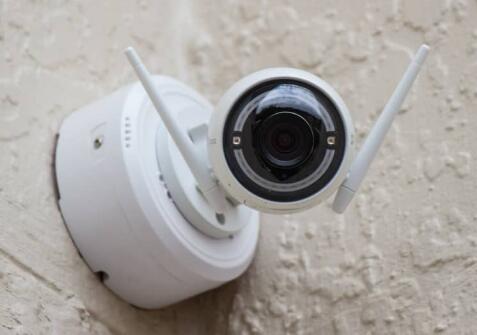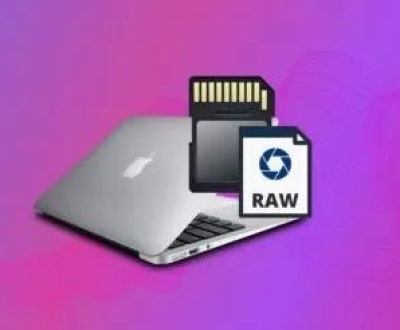They serve as the eyes that constantly monitor and record activities, providing crucial evidence in case of theft, vandalism, accidents, or other security incidents. However, one of the most frustrating issues that security camera users often encounter is video loss. When “Video loss on security camera” appears on the monitoring screen, it means that the normal video recording and transmission process has been interrupted, leaving users in the dark about what is happening in the monitored area. This article will comprehensively explore the causes, troubleshooting methods, solutions, and preventive measures related to video loss on security cameras.
Power Supply Problems: The security camera requires a stable power supply to operate properly. If the power adapter is damaged, the power cable is frayed, or there are issues with the electrical outlet, the camera may not receive sufficient power. For example, a power adapter that has been used for a long time may overheat and fail, resulting in the camera shutting down and thus causing video loss. In some cases, voltage fluctuations in the electrical grid can also damage the camera’s internal power – management components, leading to intermittent or permanent video loss.

Sensor Failure: The image sensor is the core component of a security camera that captures the video footage. If the sensor malfunctions due to physical damage (such as being hit or dropped), exposure to extreme temperatures, or aging, it may not be able to generate a proper video signal. A damaged sensor might produce distorted images, black screens, or no video at all. For instance, in outdoor security cameras, exposure to extremely high temperatures during summer can cause the sensor’s internal components to expand and contract, eventually leading to sensor failure.
Internal Circuitry Issues: The complex internal circuitry of a security camera is responsible for processing the video signal and communicating with other components. Faulty soldering, short circuits, or component failures within the circuit board can disrupt the normal operation of the camera. A short circuit on the circuit board can cause electrical surges that damage sensitive components, while a component like a capacitor or resistor burning out can prevent the video signal from being properly processed and transmitted.
Cabling and Connectivity Problems
Damaged Cables: The cables that connect the security camera to the network video recorder (NVR) or digital video recorder (DVR) play a vital role in transmitting the video signal. Ethernet cables can be damaged by physical factors such as being chewed by animals, being stepped on, or being pulled too hard. Coaxial cables, which are commonly used in older security camera systems, can suffer from wear and tear over time, especially at the connectors. A damaged cable can result in signal loss, intermittent video, or complete video loss. For example, if an Ethernet cable is partially severed, it may cause the camera to lose its network connection, leading to video loss on the monitoring system.
Loose Connections: Even if the cables are in good condition, loose connections at the camera end, the recorder end, or any intermediate connectors can cause video loss. Vibration, improper installation, or frequent movement of the equipment can cause connectors to become loose. A loose coaxial cable connector, for instance, can disrupt the video signal transmission, resulting in a “no – signal” or “video loss” message on the monitoring screen.
Network Congestion
In a network – based security camera system, if the network bandwidth is insufficient to handle the data traffic generated by multiple cameras, network congestion can occur. This is especially common in large – scale security setups with numerous high – definition cameras. When network congestion happens, the video packets may be dropped, delayed, or lost during transmission. For example, in a busy commercial building with dozens of security cameras, if the network infrastructure is not upgraded to support the high – volume video data, the cameras may experience video loss as the network struggles to deliver the video streams in real – time.
Router and Switch Malfunctions
Routers and switches are essential network devices that manage the flow of data between the security cameras and the recording devices. A malfunctioning router may have issues with routing the video traffic correctly, while a faulty switch may not be able to provide stable connections to the cameras. For instance, if a router’s firmware becomes corrupted, it may start dropping video packets, causing video loss on the connected cameras. Similarly, a switch with a defective port can prevent a camera from communicating properly with the network, resulting in video loss.
IP Address Conflicts
In an IP – based security camera system, each camera is assigned a unique IP address. If two or more devices on the network are assigned the same IP address, an IP address conflict occurs. This can disrupt the communication between the camera and the NVR or DVR, leading to video loss. For example, if a new device is added to the network without proper configuration and is accidentally assigned the same IP address as a security camera, the camera may lose its network connection and stop transmitting video.
Firmware and Software Bugs
Security cameras rely on firmware and software to function properly. Manufacturers regularly release firmware updates to fix bugs, improve performance, and enhance security. However, if the camera’s firmware is outdated or contains bugs, it can cause video loss. For example, a bug in the firmware may cause the camera to stop recording or transmitting video after a certain period of operation. Similarly, software issues in the NVR or DVR, such as glitches in the video – recording or playback software, can also lead to the appearance of video loss messages.
Incompatible Software and Drivers
When integrating security cameras with other software systems or when using third – party drivers, compatibility issues can arise. If the software used to manage the security camera system is not compatible with the camera’s firmware or the operating system of the recording device, it can result in video loss. For example, installing a new video – management software that is not fully compatible with the existing security camera model may cause the cameras to stop working properly and lose video feed.
Extreme Temperatures
Both extremely high and low temperatures can have a negative impact on the performance of security cameras. In hot environments, components inside the camera can overheat, leading to malfunctions. The battery life of wireless cameras can also be significantly reduced in high temperatures. In cold environments, condensation may form inside the camera housing, causing damage to the internal components. For example, in an outdoor security camera installed in a region with extremely cold winters, the cold can cause the camera’s lens to fog up, and the internal electronics may become less responsive, eventually resulting in video loss.
Humidity and Moisture
High humidity levels and exposure to moisture can cause corrosion of the camera’s internal components. Water ingress can damage the circuit board, connectors, and other sensitive parts of the camera. This is especially a concern for outdoor cameras that are not properly weather – sealed. For instance, if rainwater seeps into a security camera through a small crack in the housing, it can short – circuit the internal components and lead to video loss.
Troubleshooting Video Loss
Checking Hardware
Power – related Checks
Inspect the Power Adapter and Cable: First, visually check the power adapter for any signs of damage, such as melted plastic, frayed wires, or loose connections. Plug the power adapter into a different electrical outlet to see if the camera powers on. If possible, use a multimeter to test the voltage output of the power adapter to ensure it is providing the correct voltage as specified by the camera’s user manual.
Check the Camera’s Power Indicator: Most security cameras have a power indicator light. If the light is off or blinking abnormally, it may indicate a power – related issue. Some cameras may also have a status display that shows detailed power – related information. Refer to the camera’s manual to understand the meaning of different indicator light patterns.
Cabling and Connection Checks
Inspect the Cables: Carefully examine all the cables connecting the camera to the recording device. Look for any visible signs of damage, such as cuts, kinks, or exposed wires. For coaxial cables, check the connectors for corrosion or loose connections. If possible, replace the cables with new ones to see if it resolves the video loss issue.
Tighten the Connections: Ensure that all connectors are firmly plugged in at both the camera and the recording device ends. For Ethernet cables, make sure the RJ45 connectors are properly seated and click into place. For coaxial cables, tighten the BNC connectors using the appropriate tools. After tightening the connections, check if the video feed is restored.
Assessing the Network
Network Bandwidth Testing
Use network monitoring tools to check the available bandwidth on the network. There are many free and paid software tools available that can measure the network speed and bandwidth utilization. Compare the measured bandwidth with the requirements of the security camera system. If the bandwidth is consistently below the required level, it may be necessary to upgrade the network infrastructure, such as replacing the network cables, upgrading the router, or increasing the internet service plan.
Router and Switch Troubleshooting
Restart the Router and Switch: Sometimes, a simple restart can resolve temporary glitches in the router and switch. Turn off the router and switch, wait for a few minutes, and then turn them back on. Check if the video loss issue is resolved after the devices have restarted.
Check Router and Switch Configuration: Log in to the router and switch management interfaces (usually through a web browser) and review the configuration settings. Ensure that the network settings are correctly configured for the security camera system. Check for any port – forwarding rules, VLAN settings, or other configurations that may be affecting the camera’s network connectivity.
Resolving IP Address Conflicts
Check IP Address Assignments: Use network scanning tools to identify all the devices on the network and their assigned IP addresses. Look for any duplicate IP addresses. In most cases, the IP address assignment can be managed through the router’s DHCP (Dynamic Host Configuration Protocol) settings. If an IP address conflict is detected, change the IP address of the conflicting device (either the camera or another device) to a unique address within the network range.
Static IP Assignment: To prevent future IP address conflicts, consider assigning static IP addresses to the security cameras. This ensures that each camera has a fixed and unique IP address that will not change, reducing the risk of conflicts. When assigning static IP addresses, make sure to follow the correct network subnet and gateway settings as per the network configuration.
Software – related Troubleshooting
Firmware and Software Updates
Check for Firmware Updates: Visit the manufacturer’s website and look for the latest firmware updates for the security camera model. Download the appropriate firmware file and follow the manufacturer’s instructions to update the camera’s firmware. Make sure to backup any important data or settings before performing the firmware update, as the process may reset some configurations.
Update NVR or DVR Software: Similarly, check for software updates for the NVR or DVR. Updates often include bug fixes, performance improvements, and compatibility enhancements. Install the latest software version to ensure that the recording device can properly communicate with the cameras and handle the video data.
Software Compatibility Checks
Verify Software and Driver Compatibility: Review the documentation of the security camera, NVR, DVR, and any other software or drivers used in the system. Ensure that all the components are compatible with each other. If there are compatibility issues, consider using alternative software or drivers that are known to work with the existing hardware.
Test with Different Software: If possible, try using different video – management software to see if the video loss issue persists. This can help determine if the problem lies with the specific software in use or with the camera or network.
Environmental Considerations
Temperature – related Solutions
Install Temperature – Control Devices: For security cameras operating in extreme temperature environments, consider installing temperature – control devices such as heaters or cooling fans. In cold environments, heaters can prevent the camera from freezing and keep the internal components at an optimal operating temperature. In hot environments, cooling fans can help dissipate heat and prevent overheating.
Relocate the Camera: If possible, relocate the camera to an area with more moderate temperatures. For example, if an outdoor camera is exposed to direct sunlight for long hours, moving it to a shaded location can reduce the risk of overheating.
Humidity and Moisture Protection
Ensure Proper Weather Sealing: Check the weather – sealing of outdoor security cameras. Make sure that all the gaskets, seals, and covers are in good condition and properly installed. If there are any signs of damage to the weather – sealing, repair or replace the affected parts immediately.
Use Moisture – Absorbing Materials: Inside the camera housing, place moisture – absorbing materials such as silica gel packets. These packets can help absorb any moisture that may enter the housing, reducing the risk of component damage due to humidity.
Solutions to Video Loss
Hardware Replacement
If a hardware component of the security camera, such as the power adapter, sensor, or circuit board, is found to be faulty and cannot be repaired, it may be necessary to replace the component. Contact the manufacturer or an authorized service provider to obtain the appropriate replacement parts. Make sure to follow the manufacturer’s instructions for component replacement to avoid causing further damage to the camera. In some cases, if the camera is old or severely damaged, it may be more cost – effective to replace the entire camera with a new model.
Network Upgrade
When network – related issues are the cause of video loss, upgrading the network infrastructure can be an effective solution. This may involve replacing old network cables with higher – quality ones, upgrading the router and switch to more powerful models, or increasing the internet service bandwidth. A network upgrade can improve the stability and performance of the security camera system, ensuring smooth video transmission and reducing the occurrence of video loss.
Software Optimization
To address software – related video loss problems, optimizing the software can be crucial. This includes keeping the firmware, NVR or DVR software, and other related software up – to – date. Additionally, ensuring that all software components are properly configured and compatible with each other can help prevent video loss. Regularly monitoring and maintaining the software can also identify and resolve potential issues before they lead to video loss.
Regular Maintenance
Hardware Maintenance: Conduct regular inspections of the security cameras, cables, power adapters, and other hardware components. Check for any signs of wear and tear, damage, or loose connections. Clean the camera lenses regularly to ensure clear video footage. Replace any faulty components promptly to prevent potential video loss issues.
Software Maintenance: Keep track of firmware and software updates for the security cameras, NVRs, and DVRs. Set up a schedule to regularly check for and install updates. Back up important data and settings regularly to avoid data loss during software updates or system failures.
Network Maintenance: Monitor the network performance regularly. Check for any signs of network congestion, such as slow data transfer speeds or high packet loss. Keep the router and switch firmware updated and perform regular maintenance tasks, such as cleaning the device vents to prevent overheating.
Environmental Protection
Proper Installation: Ensure that security cameras are installed in suitable locations that are protected from extreme environmental conditions as much as possible. For outdoor cameras, use weather – resistant enclosures and install them in locations that are not directly exposed to rain, snow, or strong sunlight.
Environmental Monitoring: Install environmental monitoring devices, such as temperature and humidity sensors, near the security cameras. These sensors can alert you when the environmental conditions are approaching levels that may affect the camera’s performance, allowing you to take preventive measures in a timely manner.
About us and this blog
Panda Assistant is built on the latest data recovery algorithms, ensuring that no file is too damaged, too lost, or too corrupted to be recovered.
Request a free quote
We believe that data recovery shouldn’t be a daunting task. That’s why we’ve designed Panda Assistant to be as easy to use as it is powerful. With a few clicks, you can initiate a scan, preview recoverable files, and restore your data all within a matter of minutes.
Subscribe to our newsletter!
More from our blog
See all postsRecent Posts
- Retrieve deleted videos from sd card 2025-04-25
- How to retrieve damaged sd card? 2025-04-25
- Retrieve photos from sd card 2025-04-25

 Try lt Free
Try lt Free Recovery success rate of up to
Recovery success rate of up to









